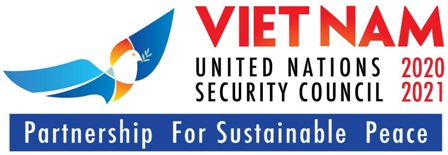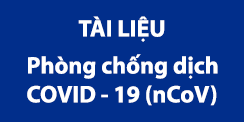Viet Nam is a country of many religions and beliefs. The Vietnamese people have a time-honoured tradition of practicing their beliefs. Different ethnic groups in Viet Nam have different beliefs linked to their own material and spiritual lives.
Traditional beliefs: With the perception that every object has a soul, since the ancient time, the Vietnamese worshiped a large number of gods, especially those related to agriculture such as the sun, the moon, land, mountain, river and forest, etc., for good luck. Each ethnic minority in Viet Nam has its own way of practicing belief, which is still maintained by some ethnic groups such as Tay-Thai, Hmong-Dao, Chinese-San Diu-Ngai, Cham-Ede-GiaRai and Mon-Khmer.
In addition, the most popular and time-honoured custom of the Vietnamese and some ethnic minorities is ancestor worship and commemoration of death anniversaries.
Every Vietnamese family has an altar to worship their ancestors and attach importance to the commemoration of death anniversaries and acknowledgement of the service rendered by the predecessors. Besides ancestor worship in each family and each clan, many villages have a communal house and a temple to worship the village Deity. The custom of worshiping the village Deity and the communal house are the unique features of Vietnamese villages. The village Deity worshiped in the village’s temple or communal house can be a Deity or an outstanding figure who rendered great service such as the forefather of a traditional handicraft or a national hero who recorded glorious feats in nation building and in the wars against foreign aggression. The Vietnamese people also worship different gods such as the kitchen god or god of the soil, etc.
Religions: Viet Nam has a diverse mix of major religions with a large number of followers, religious figures, and monks such as Buddhism, Christianity and Muslim and some indigenous religions such as Caodaism and Hoa Hao, etc.
Buddhism: There are two sects of Buddhism: Mahayana and Theravada (Hinayana). Mahayana Buddhism was introduced in Viet Nam in the 2nd century B.C, and Theravada was introduced in Viet Nam in the 2nd century A.D. After the 10th century, Buddhism developed very quickly in Viet Nam and became the national religion under the Ly-Tran dynasty. At present, there are 10 million Buddhist followers, 20,000 pagodas and 38,000 Buddhist monks and many schools offer Buddhist training in Viet Nam.
Catholicism: Catholicism was introduced in Viet Nam in the 15th century by European missionaries. Catholicism was first popular in coastal provinces such as Thai Binh, Nam Dinh, Ninh Binh, Thanh Hoa and Nghe An, etc., then spread throughout the Red River delta and cities. At present, there are six million Catholics, 6,000 churches and 15,000 Catholic priests in Viet Nam.
Protestantism: Protestantism was introduced in Viet Nam in the late 19th and early 20th centuries. However, it was not until 1920 that Protestantism became popular all over the country. At present, there are one million Protestants and 500 Protestant churches in Viet Nam.
Muslim: Muslim religion was introduced in Viet Nam by the Cham people in the 10th and 11th centuries. At present, there are 100 mosques, 70,000 Muslim followers and 700 dignitaries in Binh Thuan, Ninh Thuan, An Giang, Tay Ninh, Dong Nai provinces and Ho Chi Minh city. There are two schools of Muslim in Viet Nam: orthodox Muslim with followers who are Cham people from Chau Doc, Ho Chi Minh city, Tay Ninh and Dong Nai provinces; and non-orthodox Muslim (or Cham Ba Ni) with followers who are Cham people from Binh Thuan and Ninh Thuan provinces.
Caodaism: Caodaism is an indigenous religion created in Tay Ninh province in 1926. Caodaism worships three Supreme Beings namely Buddha, Jesus Christ and Cao Dai God. At present, there are 2.3 million Cao Dai followers, 7,100 dignitaries and 6,000 temples in Viet Nam. The centre of Caodaism is Tay Ninh province.
Hoa Hao: Hoa Hao, also called Hoa Hao Buddhism, is another indigenous religion created in 1939 in Hoa Hao Village, Tan Chau District, An Giang Province. This religious sect is concentrated in the Mekong River delta and its membership is estimated at about 1.2 million.
Freedom of belief and religion: The right to freedom of belief and religion of all Vietnamese citizens is provided for by the law and ensured by the State. This is clearly stated in the Constitution and respected in practice. Article 70 of the Vietnamese Constitution reads: “The citizen shall enjoy freedom of belief and of religion; he can follow any religion or follow none”, “The places of worship of all faiths and religions are protected by the law” and “No one can violate freedom of belief and of religion”.
The people’s right to freedom of belief and religion is reflected in various legal normative documents. The Ordinance on Belief and Religion entering into force on 15 November 2004 has institutionalized State policies on belief and religion and ensured the exercise of the right to freedom of belief and religion. Every citizen, regardless of his belief and religion, is equal before the law and entitled to the right to follow any religion or follow none, he shall enjoy the right to express his belief, exercise worships, pray and participate in religious activities, in the study of religious theories and ethics. All religious organizations are equal before the law.
The State ensures the right to freedom of belief and religion, protection of the facilities and assets of religious establishments, such as pagodas, churches, mosques, oratories, sanctuaries, temples, headquarters of religious organizations, religious schools, bibles and worshiping objects. On 1st March 2005, the Government issued Decree 22/2005/ND-CP guiding the implementation of the Ordinance on Belief and Religion. With regard to Protestantism, the Prime Minister issued Directive 01/2005/CT-TTg on 4th February 2005 on some tasks toward Protestantism with a view to creating favourable conditions for the practice of Protestant followers and ministers.
Religious practice: At present, there are 20 million religious followers, nearly 62,500 dignitaries, monks and 22,345 worshiping places in Viet Nam. Training establishments for different religions have grown in number. Currently, Viet Nam has 10 religious universities, 3 Buddhist academies, 6 Christian grand seminaries, 1 Institute of Bible and Theology under Viet Nam’s Confederation of Evangelical Churches and 40 schools training religious dignitaries at different levels. Religious publications, especially bibles and books are published at the request of religious organizations in accordance with the law.
Religious followers enjoy freedom in the practice of religious ceremonies and in the expression and exercise of the beliefs. Religious dignitaries and monks are free to exercise religious activities in accordance with the law and religious rules. The ordainment, appointment and secondment of dignitaries are carried out in accordance with church rules.
Over the last years, religious organizations recognized by the State under the law have developed in terms of the number of establishments, followers, dignitaries, newly built worshiping places, bible and book publications and activities provided by its charter, statute, religious rules and law. Dignitaries and monks enjoy the right to study or be trained at home and abroad or participate in religious activities abroad.
Many foreign religious organizations have come to Viet Nam for exchanges with local religious organizations./.



